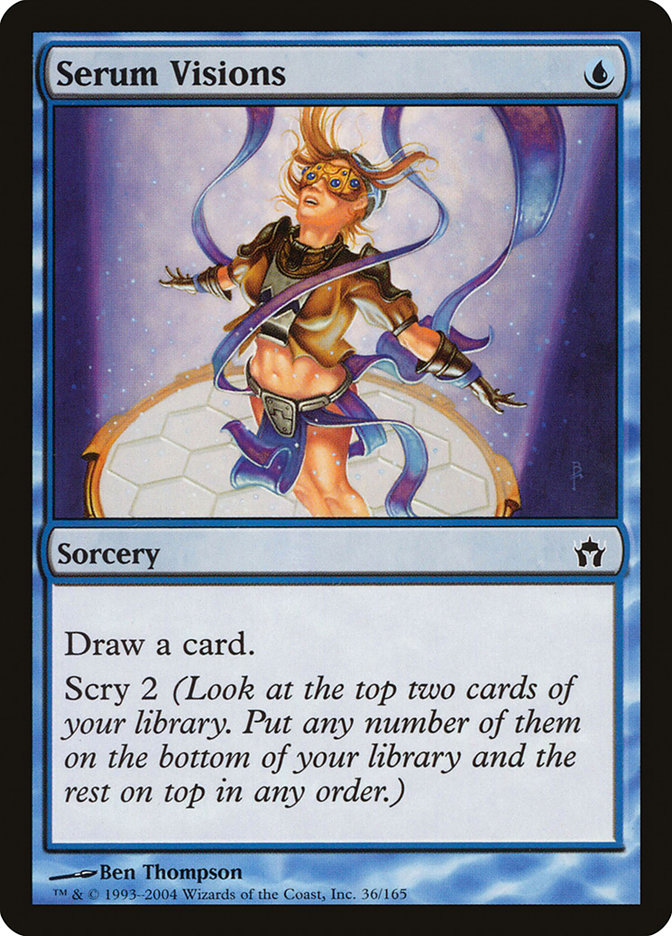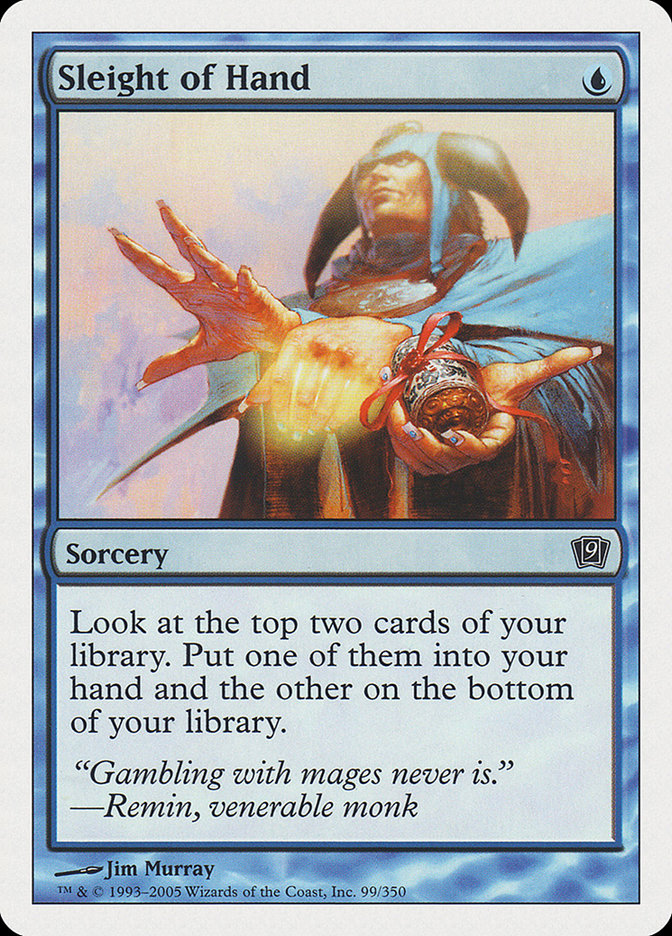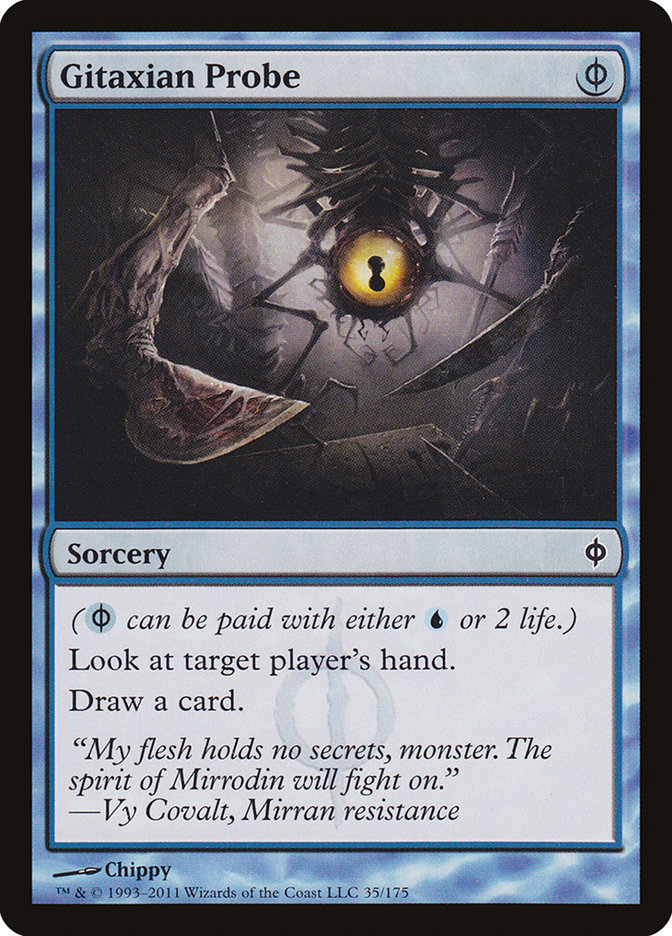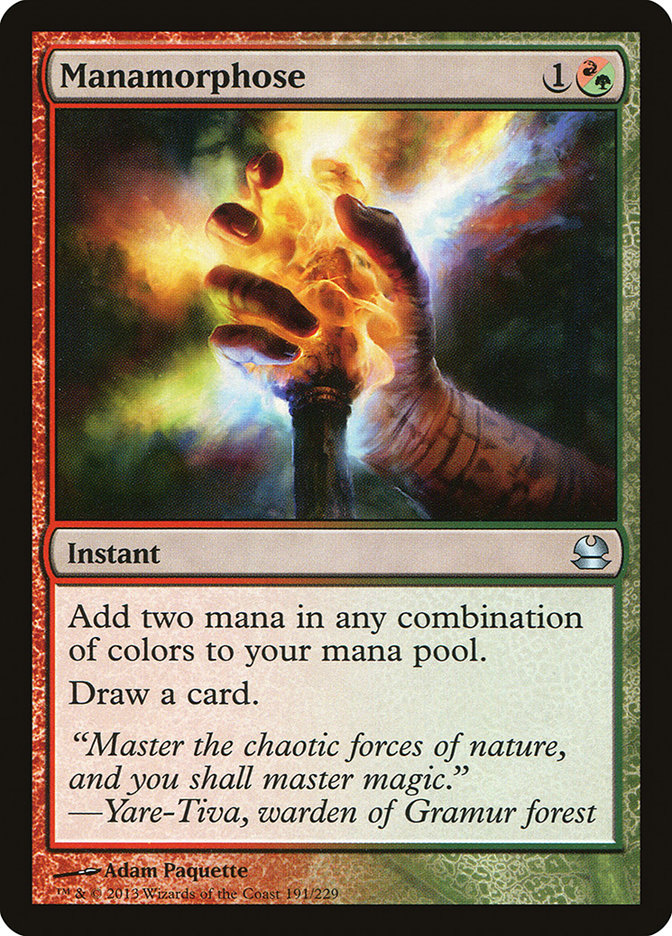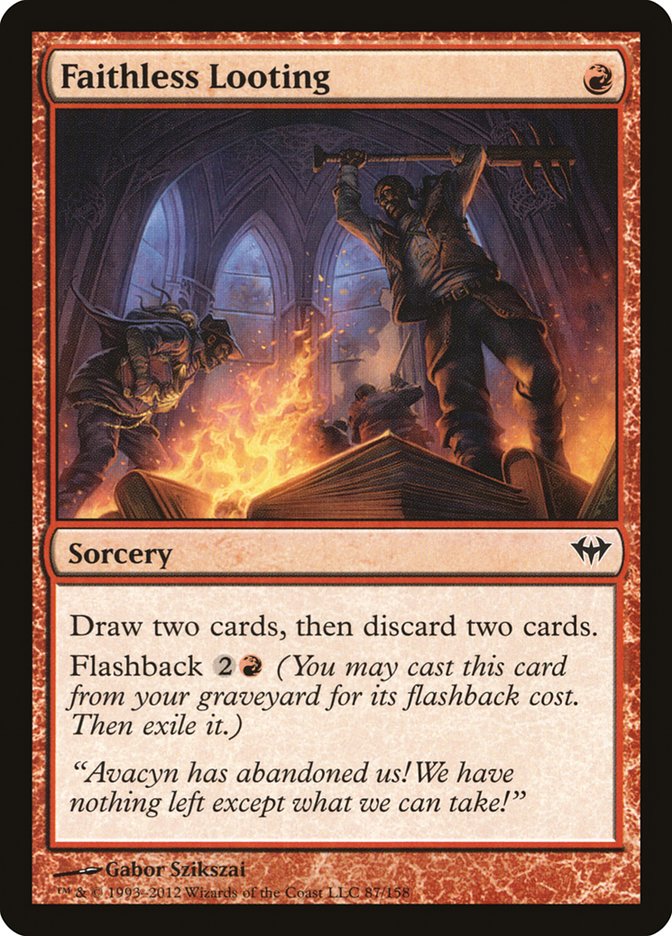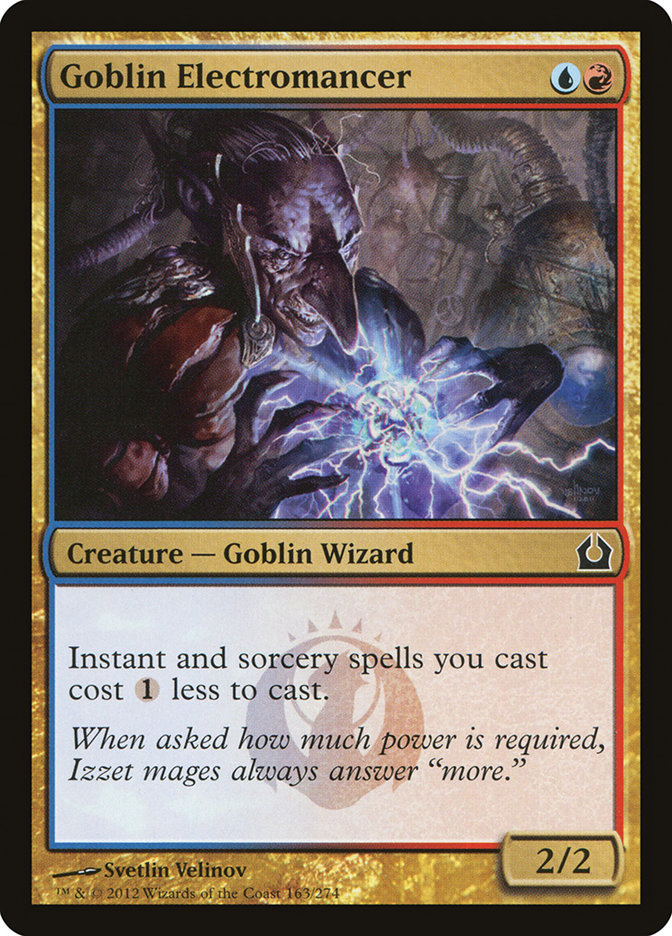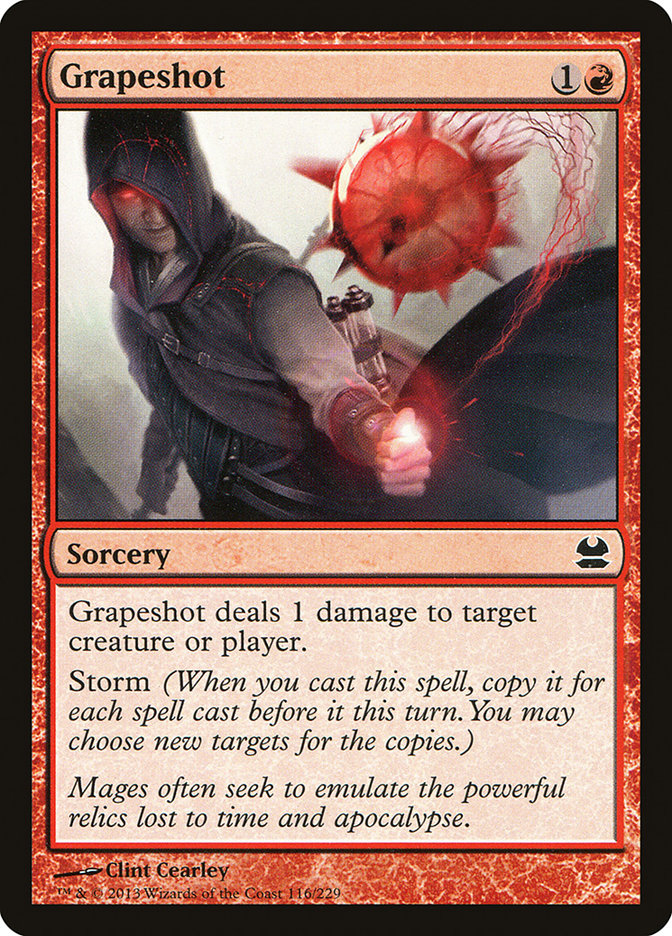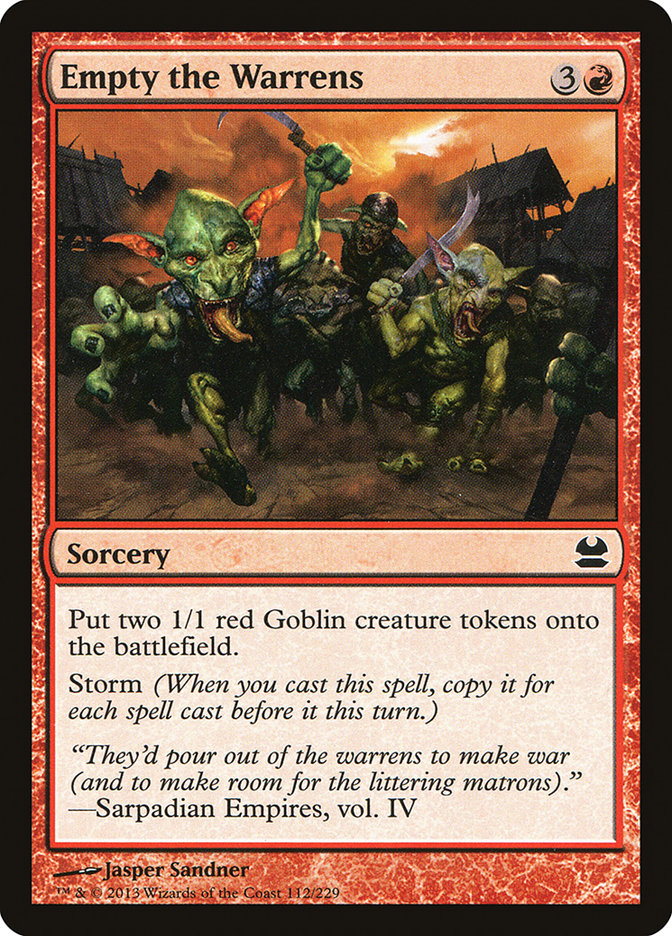You may have heard that there’s a Modern Grand Prix in Richmond this weekend.
This is not news to any of you of course. You were already planning on being there. I can say this with confidence because based on preregistration numbers as of this writing, it is my conservative estimate that literally every Magician in North America will be in attendance. And why shouldn’t they be? Modern has been given fresh legs from the recent banned list changes, and we’re coming off a Pro Tour that showcased a lot of diversity and innovation.
Modern has something for everybody! If you want to crash into the red zone with little beaters and throw lightning at your enemy, you can do that. If you want to sit with a mitt full of answers and grind your opponent into dust with countermagic, you can do that. And if you want to play a degenerately powerful combo deck that murders people on turn 3 in a completely non-interactive manner, you can do that too!
Wait. What? One of these things is not like the others. One of these things is broken.
My love affair with casting Grapeshot is no secret, so you’ll have to forgive my hyperbole, but if I may be so bold, the conventional wisdom is wrong. Modern is not a Wild West frontier where anything can win. It only appears to be at the moment because so many players haven’t yet gotten the memo—there is a best deck, and it’s not particularly close.
Creatures (3)
Lands (18)
Spells (39)
- 2 Lightning Bolt
- 4 Sleight of Hand
- 4 Serum Visions
- 4 Desperate Ritual
- 3 Grapeshot
- 4 Manamorphose
- 4 Pyromancer Ascension
- 4 Pyretic Ritual
- 4 Gitaxian Probe
- 3 Past in Flames
- 3 Faithless Looting
Sideboard

In the wake of Pro Tour Born of the Gods, several writers and coverage reporters analyzed the data and concluded that Storm was the "best performing deck," but for the moment people are generally finding ways to temper this conclusion with some sort of caveat. Of course the deck performed well, you may say, as it was flying under the radar and wasn’t being hated out. Kai Budde and Jon Finkel put up strong numbers with Storm? No surprise there. They’re all-time greats and could Top 16 a Pro Tour with a ham sandwich. I can understand how you might think these things at first, but I’m confident we’ll see that 60% win rate sustained over the coming months.
Storm is not just a good deck; it is a proper developmental mistake. I genuinely believe it will start to warp Modern in an unhealthy way once more people realize how powerful it is. Storm had exactly one bad matchup, and that deck was crippled by bannings. It is the new apex predator. Storm is Caw-Blade. Storm is Thopter-Depths. Storm is Necro-Donate. You need a really good reason to register something else, and your reason is probably wrong.
If your reason for not playing Storm is "I’ve never played it before, and it’s a very difficult deck to play," then your reason is especially wrong! I’ve heard more than a few of you talk about how you’re dreading that you might need to "learn how to play Storm," as if it’s some kind of absurdly complex Not-Real Magic. This is nonsense. Storm is honestly pretty simple and easy to play. I will explain!
How Storm Works
Even though the name of the archetype, "Storm," is well ingrained in the Magic community at this point, it’s not particularly useful to think of this deck as a "storm deck." Really, it’s an aggro deck. It has more in common with something like Zoo than it does with Legacy Ad Nauseam Tendrils. When you’re playing Zoo, you have about twenty redundant creatures and about twenty redundant burn spells, and your goal is to cast as many of them as possible as quickly as possible. Modern Storm functions more or less the same way. You have a bunch of redundant cards that fall into one of a few broad categories. The list above is:
- 29 Mana Sources (lands, rituals, and Goblin Electromancer)
- 19 Cantrips (including Manamorphose, which is occasionally also a mana source)
- 7 Win Conditions (Pyromancer Ascension and Past in Flames)
- 3 Grapeshot
- 2 Sort-Of Grapeshot (Lightning Bolt)
Your goal is to put as many cantrips and mana sources as possible into your graveyard, activate one of your win conditions, and then play one of your Grapeshot. If you do those three things in the correct order before your opponent kills you, you win the game.
All this is basically another way of saying that this is not a "count to twenty spells" deck in the same sense that Legacy Storm is a "count to ten spells" deck. You don’t have to save up a bunch of cards in hand for your "storm turn." Your storm count is actually irrelevant 95% of the time. Just keep playing cantrips, looking at new cards, and filling up your graveyard and eventually one of two things will happen:
1. You’ll get Pyromancer Ascension in play, put two counters on it, and then start cantripping into more cantrips, at which point you can draw your deck if you feel like it and then cast a burn spell and win the game.
2. You’ll cast Past in Flames with at least two mana floating, replay all your rituals, and then replay all your cantrips. In the process you’ll look at fifteen to twenty new cards, and while not quite drawing your deck, you’re overwhelmingly likely to find a Grapeshot, cast it, and win the game.
The deck is operationally complex but strategically very simple. You try to do one of those two things every game, which makes the deck relatively easy to play. Of course there are various tricks with each of the individual cards, but these are learned quickly with even a modicum of practice.
Can’t be bothered with a modicum of practice? Fine.
Some Notes On Individual Cards
Some basic stuff first. If you have both cards and plan to play both in the same turn, play Sleight of Hand first so that you look at the most cards. If you have both in your opener, however, I prefer Serum Visions on turn 1. It’s rare that you want to keep both cards, and usually when you do it involves playing Pyromancer Ascension on turn 2 anyway, so the scry is unlikely to disrupt your Sleight. (This comes up a lot with one-land hands. Playing Visions on turn 1 gives you three looks to find a second land, whereas Sleight only gives you two.)
Remember that the unwanted cards you send to the bottom with Sleight of Hand and Serum Visions are shuffled back up every time you crack a fetch. So try to crack fetches before you cantrip, and if you’re in a drawn-out game and have cast several cantrips looking for something in particular, leave your fetches uncracked for as long as possible to increase your chances of finding it.
Try to sequence your Serum Visions so that it is either the last thing you do before passing the turn or you can cast a Gitaxian Probe or Manamorphose immediately after it to draw the card you leave on top.
I usually hold Gitaxian Probe until a turn when I’m unsure how to use my mana. For example, on turn 1 if I have Serum Visions and Probe, I cast Visions and hold Probe. This deck can ignore its opponent well enough that you rarely need any extra information to resolve a turn 1 Visions.
If you ever don’t have anything to do with your mana, blow these free cantrips immediately. You’re all about looking at additional cards, and if you don’t maximize every available opportunity to cantrip in the early turns, it will snowball and cause you to be several cards behind on turns 3, 4, or 5 when you’re actually going off.
For example, if it’s turn 1 and your only cantrip is a Gitaxian Probe, pay two life rather than paying U to give yourself a chance to draw Sleight of Hand, Serum Visions, or Faithless Looting and cast it.
Here’s another example. Let’s say it’s turn 2 and your hand is just Manamorphose and mana sources. You should cast the Manamorphose to make UR, and if you draw a Pyromancer’s Ascension, Goblin Electromancer, or cantrip, you can then cast it.
Caveat: There will be post-board spots involving Empty the Warrens (and some involving Grapeshot as pyrotechnics) where this will not be the case. Generally I prefer to slow roll the free cantrips if I have Empty the Warrens in my hand, but I don’t usually slow roll them if Empty is just an out I can play to.
This is definitely the worst of the cantrips, but it’s occasionally very useful for going off while bottlenecked on blue mana. Since it’s card disadvantage and gets worse versus discard or graveyard hate, it gets boarded out a lot. Having said that, if you don’t have Serum Visions, Sleight of Hand, or Gitaxian Probe on turn 1, firing off Faithless Looting is totally fine.
An obvious but surprisingly easy thing to forget is that if you’ve cast Past in Flames, you can Flashback Faithless Looting for R.
When you play this card on turn 2, people freak out. If they have a way to kill it, they will almost always do so. This can occasionally be used to your advantage to buy time. The thing is that a turn 3 Goblin Electromancer with R open will almost always allow you to go off if they don’t interact with you. Untapping on turn 3 with an Electromancer already in play is an embarrassment of riches and will give you way more mana than you actually need, so I honestly don’t play Electromancer on turn 2 very often unless I’m hoping my opponent wastes their turn killing it.
Relative to how much your opponents value killing it, Goblin Electromancer is a little overrated. Everyone leaves in removal for it, so I board it out against pretty much every fair deck.
That said, if you want to get some use out of your Goblin Electromancer, try to hold it until you have some additional red sources available. This way you can respond to removal with extra rituals or Manamorphose. Unless you’ve got a bunch of rituals in hand, you’ll usually only break even on mana this way, but it’s a good way to build storm for an Empty the Warrens.
Using Grapeshot in conjunction with some cantrips to sweep the opponent’s board comes up a lot. They aren’t particularly important otherwise; you need one to kill people, but as long as you get a Pyromancer Ascension or Past in Flames going, you’ll almost certainly find it. I usually board down to one Grapeshot in any matchup where I wouldn’t want an Electrolyze.
Bring in Empty the Warrens against everything besides other combo decks and Tron. It’s your plan versus graveyard hate. Remember that people will keep a lot of loose hands just because they have Rest in Peace, Grafdigger’s Cage, or other similar graveyard hosers, so your Emptys don’t have to be huge; six or eight Goblins will usually do just fine. Empty will also buy you a ton of time to find a Pyromancer Ascension or Past in Flames if you’re being clocked by random beaters like Tarmogoyf.
Against counters, you can often piggyback off of their spell count to get a bigger Empty the Warrens. If you’re playing against blue and have the option of, say, turn 2 ritual, ritual, Empty or waiting a few turns, I usually wait. (They’ll usually Mana Leak the first ritual anyway.) If you hold those cards until turn 4, you can bait them into Leaking the first ritual and then play more to get some free storm.
A Brief Word About Desperate Ravings
The majority of questions I’ve received about Storm since the Pro Tour have been in regard to the differences between the list my team played in Valencia and the list played by members of Team CFBP. In my article last week, I discussed those differences and defended my decisions, so I will simply refer back to that article rather than reiterate my reasoning this week.
Of course, Finkel and Company stand by the deckbuilding decisions they made as well, which puts me in a profoundly confusing situation. I’ve played versions of Storm with Desperate Ravings, versions with Thought Scour, and versions with sixteen lands. They were all reasonable, but I prefer my current configuration. My confidence in this matter is ironclad, but it does feel like monumental hubris to disagree with Jon and Kai, as I obviously have immense respect for both.
One possible way that I could reconcile this internal conflict is to consider Sam Black’s concept that different plays are correct for different people. It’s somewhat likely that Team CFBP Storm players simply approach this deck differently than I do. From watching their replays, I can gather that Jon and Kai prefer to wait as long as possible before attempting to go off, seeing each turn as an opportunity to accumulate additional resources. In fact, this makes perfect sense given their pedigree, as "wait until the last possible moment before going off" was the central tenet of the most broken combo deck either of them have ever played. In this context, milking Desperate Ravings for value to give yourself the most material to go off with seems natural.
In contrast, I play Storm like it’s a shootout. I consider speed to be the deck’s biggest asset, and I see every draw step I give my opponent as a potential disaster. I want to get my games over with quickly before my opponents can race me or establish their defenses. When every game is a race, Desperate Ravings seems incredibly clunky, whereas Faithless Looting gives you more precision when sculpting your hand and saves you a mana up front.
Obviously, this is not to say that either version is incapable of playing in either mode. I can play a patient game if I’m not pressured, and Finkel’s list is more than capable of going for a turn 3 kill if he thinks he’ll be dead by turn 4. We’re simply geared to approach the game slightly differently by default. I can say with confidence that the list I’ve presented is the ideal build for me, but I wouldn’t presume to correct Tiger Woods’ backswing or to tell Jon Finkel how to build his Storm deck. I hope that you as readers can forgive me hedging a little in this regard, but as a long-time student of Magic’s history, I have an almost reverential respect for the old masters, so claiming that the actual greatest Magic player of all time misbuilt his deck is not something I can do lightly.
That said, I’ll be at Grand Prix Richmond Storming my way through the enormous crowd, Faithless Lootings and all. As I said last week, I can’t fathom playing anything other than Storm for as long as it remains legal for me to do so, which I’m a hundred percent sure will not be too much longer. Don’t sleep on this deck! The opportunity to do something this degenerately powerful doesn’t come along very often.


